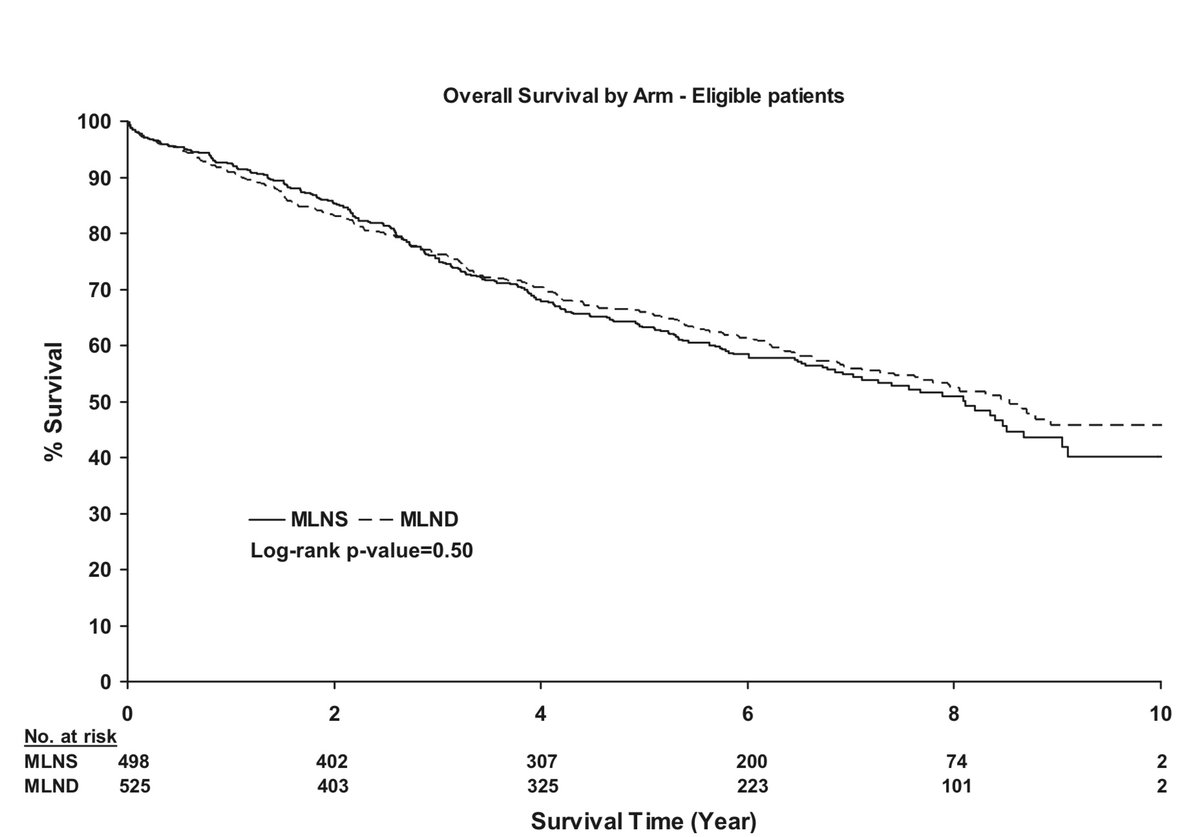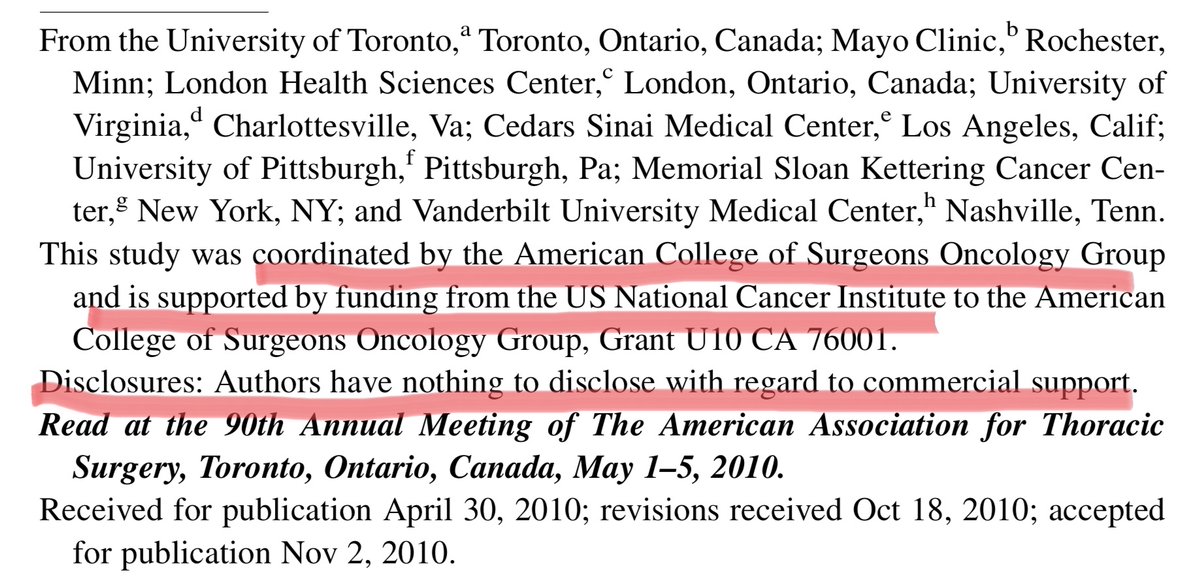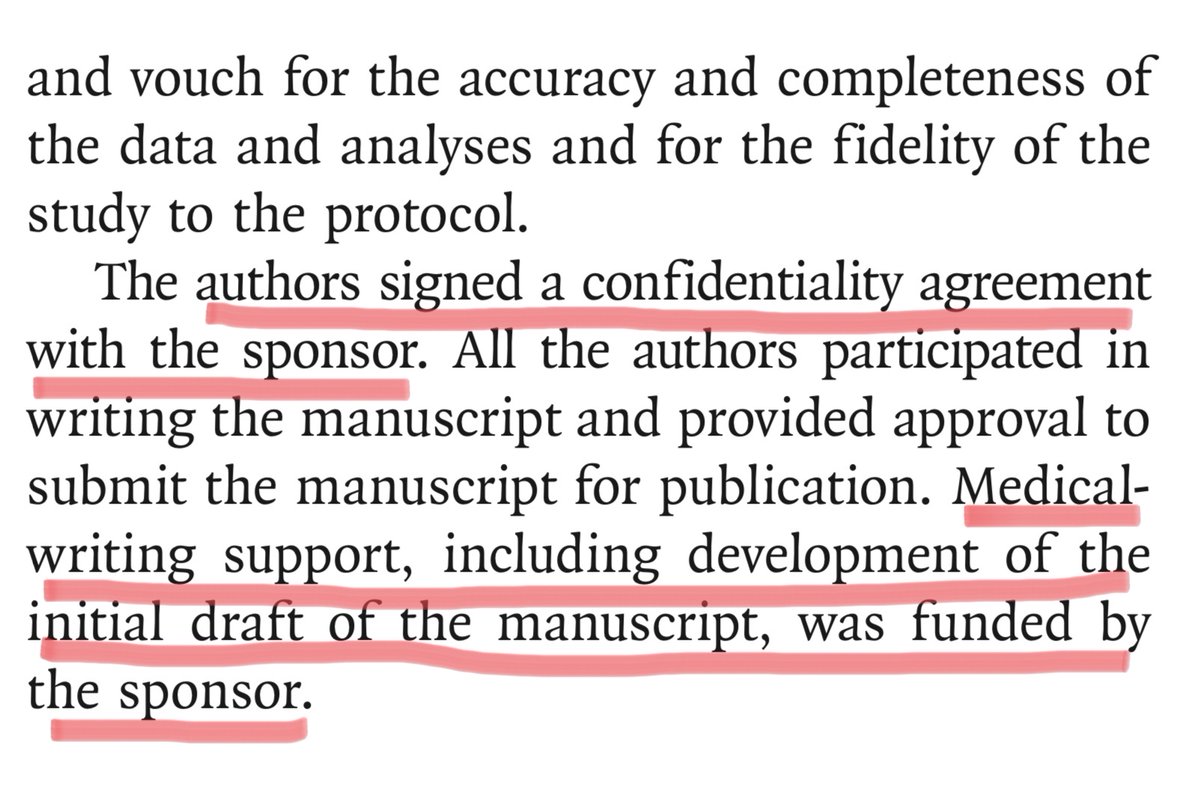
24 November: And now a word from our sponsor
For Lung Cancer Awareness Month #LCAM I’m going to review 30 important lung cancer trials over 30 days. These posts are directed at non-medical professionals, with descriptions of the results and of what makes a good trial. #lcsm 1/16
For Lung Cancer Awareness Month #LCAM I’m going to review 30 important lung cancer trials over 30 days. These posts are directed at non-medical professionals, with descriptions of the results and of what makes a good trial. #lcsm 1/16

To date we have reviewed at a couple of trials looking at the role of surgery in multidisciplinary management (Nov 6 & 8). Today we’ll look at a proper randomized trial of two surgical procedures for staging the mediastinum (the middle of the chest, between the lungs). 2/16
Knowing whether cancer has spread to mediastinal nodes is essential for staging a tumour. As we have seen, staging is required for any treatment decisions. Mediastinal nodes have numbers corresponding to the locations in the diagram below. 3/16 

Surgeons may biopsy select nodes before or during surgery (mediastinal node sampling MLNS) and may also completely remove all nodes on one side during surgery (mediastinal node dissection MLND). This trial looked at whether MLND was necessary if MLNS was negative. 4/16
People suspected of having early-stage tumours had MLNS, consisting of stations 2R, 4R, 7, and 10R for right-sided cancers, or 5, 6, 7, and 10L for left-sided cancers.
If all these nodes were negative, patients were randomized in the OR to no further nodal assessment, or to MLND.
If all these nodes were negative, patients were randomized in the OR to no further nodal assessment, or to MLND.
The hypothesis was that MLND might improve survival by removing involved nodes, or by identifying higher-stage patients for adjuvant therapy. The trial was powered to detect an 8% improvement in 5-year survival with a 1-sided test. 6/16
This was a large trial, enrolling 1023 people at 63 hospitals between 1999 and 2006. MLNS was performed by mediastinoscopy or by VATS thoracotomy (today some might be performed by ultrasound-guided bronchoscopy biopsies, EBUS). 7/16
By the primary endpoint the trial was negative. There was no difference in survival whether people got MLND or not. Of note, 4% of people with negative MLNS were found to have central (N2) lymph nodes after undergoing MLND. This would be lower today with routine pre-op PET scans. 

This is another study where we interpret a lack of superiority as non-inferiority, whether that is rigourously correct or not. Subsequent development of PET scans and EBUS have made us increasingly confident in omitting MLND for most. 9/16
The study-design aspect I’ll talk about today is the role of the sponsor. This trial was sponsored by a co-operative group of doctors and other research professionals, the American College of Surgeon’s Oncology Group (ACOSOG).
Take a look at the statement below from the paper.
Take a look at the statement below from the paper.

In contrast, many trials are sponsored by pharma companies. The company does a lot of the study design, analysis, and often the writing of the final paper with input from the doctors listed as authors. Compare the statement below to the one above. 11/16 



Intrinsically, pharma studies are performed for the purpose of obtaining approval to sell their drugs. Cooperative group studies (November 1, 2, 3, 4, 9, 10, 17) may look at questions where there is no obvious profit motive. 12/16
I'm not going to demonize pharma: the system works well when their profit motive leads them to develop improved therapies that are a societal good
But the system works poorly when the drugs are not as good, but are marketed as important advances. Trials are part of that marketing
But the system works poorly when the drugs are not as good, but are marketed as important advances. Trials are part of that marketing
So when reading a pharma study it’s important to remember that they may have literally billions of dollars riding on the outcome. Pharma are rational actors who are incentivized to produce trials that show their products in the best possible light. 14/16
Look back to the 14 November thread (ADAURA) for examples of trial design elements that favour the sponsor. Recall yesterday regarding unusually elaborate statistical analyses.
It’s important to keep these considerations in mind for any study, but particularly those from pharma.
It’s important to keep these considerations in mind for any study, but particularly those from pharma.
Tomorrow we’ll take a look at our first paper that’s not a randomized study, to consider meta-analysis. 16/16 

• • •
Missing some Tweet in this thread? You can try to
force a refresh











